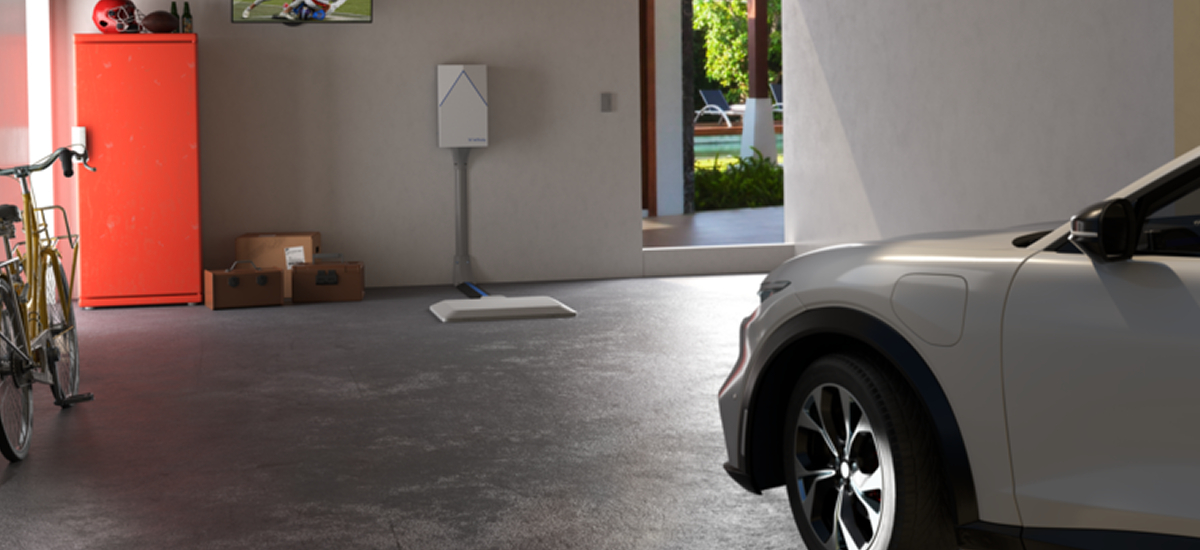
 Your Credit Estimate
Your Credit Estimate
 Your Credit
Your Credit
Your zip code helps us provide you with the most accurate vehicle pricing and vehicle availability.
We estimate your credit score to give you an idea of your monthly payments. To get an accurate payment amount, complete our credit application by clicking the Start Credit Application button below.
start credit application
Wireless charging. What was thought once impossible for devices like smartphones became a reality several years ago. It was more or less a power bank that consumers could place a smartphone onto and then it just recharged like magic. It took some time to become practical – it was more of a novelty after all – and even longer for the auto market to catch up. Now, many cars are offering wireless charging capabilities for one or two devices, and that begs the next question. When can we wireless charge our cars?
The need to stop and recharge a battery-electric vehicle (BEV) is one of the main issues a lot of would be BEV buyers run into. Heck, I want to get an electric car, and just this weekend I had the chance to rent one. I decided not to, because I didn’t want to get stranded during my upcoming two hour road trip. And you know what? During that whole time, I didn’t see one single exit with a BEV charging station. That’s the same scenario many Americans think about when it comes to buying a BEV.
Joint venture IONNA wants to change that by building a new nationwide BEV charging network across America. City infrastructure and highways need to make room for BEV charging stations or change altogether if BEVs become more practical. And when people buy more BEVs, there’s still the problem of space and vacancy. Like finding a line of port-a-potties that are all occupied when you really gotta go, finding a charging station filled up when your BEV is on low will be pretty frustrating. The National Renewable Energy Laboratory (NREL) estimates we will need 182,000 DC fast chargers by 2030, and not even IONNA plans to match that number, attempting to deploy only 30,000 BEV chargers by this summer…which is pretty much over. Where are all the charging stations?
A possible solution could be wireless charging pads. The Kia Corp was in talks with its parent group Hyundai at one point. Overseas, China actually has an entire solar highway that can double as a wireless charging panel to recharge vehicles driving along its roads. Why America hasn’t caught onto this is anyone’s guess, but it could be a great way to update highway infrastructure and reduce the need for a number of charging stations. Even if that was possible, no BEVs come from the factory with built-in wireless charging installed for battery packs at the moment. It would be like putting an egg before the chicken – nothing’s going to happen.
It’s not unheard of, though. Researchers at Oakridge National Laboratory in Tennessee have been developing high-speed wireless chargers for BEVs. Earlier this year, Volkswagen demonstrated a new wireless charger for a Porsche Taycan that set a new power density record. Hyundai is also testing wireless charging in Korea with technology it licensed from WiTricity. Although the testing is happening overseas, WiTricity is an American company based in Watertown, Massachusetts, and currently holds the patents for wireless charging of BEVs. Currently working towards commercialization of this technology to help convert more buyers from ICE vehicles to BEVs, WiTricity is already planning perfect ways to implement this technology and show how effective wireless charging can be.
"We are working with a large number of fleets and we have deployed the first units…Return-to-depot fleets are an excellent use case for wireless. It's touchless." He said school buses, because they sit idle most of the day, are a natural fit for wireless charging.” - Pamposh Zutshi, vice president of product at wireless charging manufacturer WiTricity
Wireless charging pads could be the next practical step for BEV charging – why not make an entire parking lot that can double as a charging pad? That’s the kind of development that could change everything. Want to keep up with cool automotive technology? Follow us on NowCar social media.